MINOR
What is the disruptive events minor?
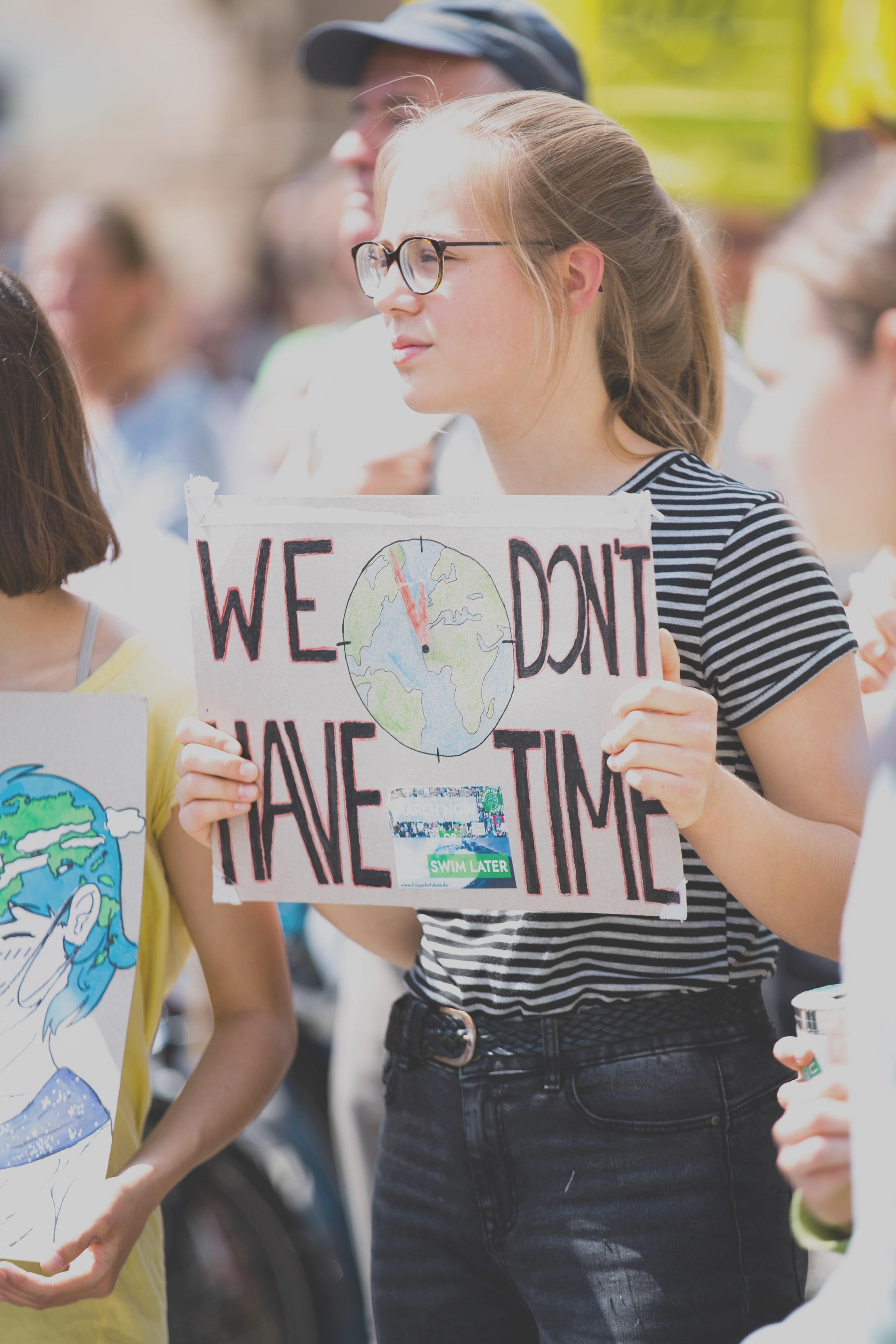
Is this minor for international students?
How was the minor during COVID-19 restrictions?

ISSUE 1
DISRUPTIVE EVENTS VOLUME I,
2020-2021
What’s is this magazine?
Description of minor
Internationalism aspect of minor
Content of the minor
Building intensive care units
How was the minor during COVID-19
Serious Game: disaster in my backyard
Affects of mental health in lockdown
Real life disruptive events
Beirut explosion
Seaweed beach
Current and predicted water disasters
The United Nations Office for Disaster Risk Reduction
Page 3
Page 4
Page 8
Page 10
Page 15
Page 17
Page 19
Page 22
Page 23
Page 24
Page 26
Page 28
Page 31
2
Table of contents
What’s in this magazine?
Thismagazinegivesadescriptionoftheminor ‘DisruptiveEvents’ whichisgivenbytheAvansUniversity of applied sciences. Included are articles about the experience of doing this minor during the COVID-19 pandemic as well as some projects that have been done during this minor. There are also some interesting articles that are related to the topic of disruptive events. If you are interestedindoingaminorthatlooksatdisasterrisk reductionwithachoiceofeitherfollowingthe track: ‘Migration, Policy and Practice’ or ‘Environmental Disaster Analysis, Communication and Climate’, havealookthroughthismagazine.Hereyouwillfindtheexperiencefromastudentperspectivewithsomeadditionalotherinterestingarticles.
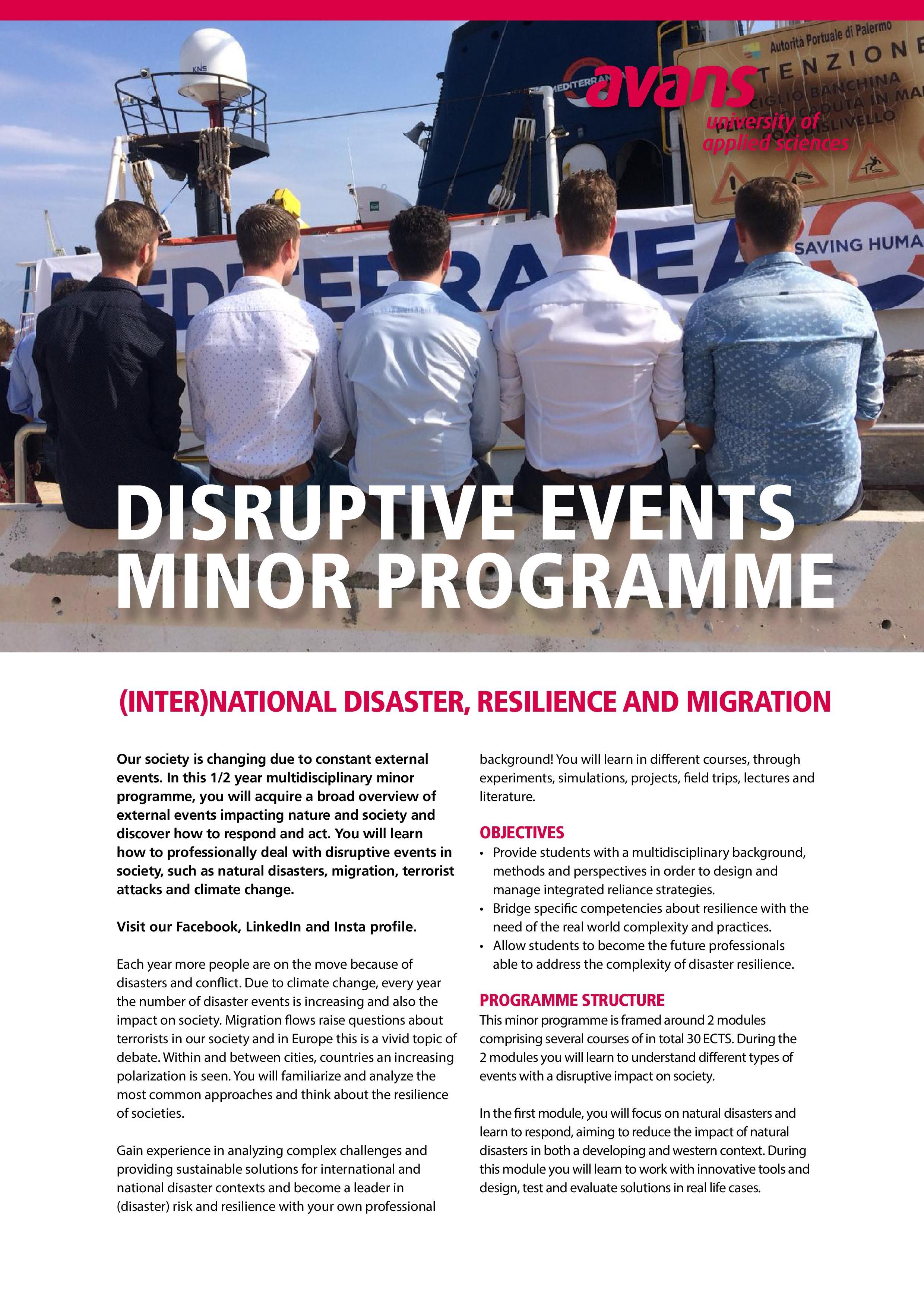
3
Contactdetails Email:DisruptiveEvents@avans.nl
Description of the minor
When you choose this minor, you will find out that it consists of two parts. The first part is a general part, both tracks (migration track & climate track) must follow the courses that are given. Next to that, one track specific course is being given to prepare you for the second part of theminor.Thefollowingcoursesarebeinggiveninthe first partoftheminor:
Experimentingwithinnovativetechnologiesinemergency response
In this course, you will learn about emergency response systems when disasters occur and get to know what challenges the emergency services face regarding coordination, logistics and more. As a group of 4 or 5 students,youwillwrite areportabout adisastersituationof your choosing and will conduct an experiment that uses (innovative/new) technologies that improve the disaster responseregardingyourchosendisaster.
PrecastingglobalfloodanddroughtriskusingGIS
In this course, you will learn the basics about water management. After that, you will learn to work with the mapping program “ArcGIS Pro”, an application that lets you create maps, add spatial data and do spatial analysis. As a duo,youwillhandinasocalled ‘’storymap’’, anonline story about your flood prone project area in The Netherlands, thatissupportedbymapsthatyoucreated.
Systemthinkingindisasterresilienceandrecovery
In this course, you will learn about system thinking, resilience and recovery in a disaster situation. You will get to understand more clearly why certain things happen in countries when disasters strike. Next to the lectures, you will work as a group of 4 or 5 students on a real-life project that is provided by a problem owner. That means it is possible that you will contribute to the solution of a real-life problemthattheproblemownerfaces!
4
Epidemics disaster response and prevention(migrationtrack)
In this course, you will learn about epidemics/ pandemics and how diseases become an epidemic/pandemic. You will also have a look at migration flows and their influence of disease spreading public and mental health. You, alone, will write a report about the health of student during an epidemic/pandemic or that of a refugeeinacampattheEuropeanborder.
Climatechangeimpacts
Field Exploration Contamination (climate track)
In this course, you will be introduced to the project that will take place in second part of theminor.
In this course, you will learn about climate change and the different effects it has on our world. As a group of 4 or 5 students, you will write a report about a country that is prone to climate change and the effects climate change have on this country in the yearstocome .
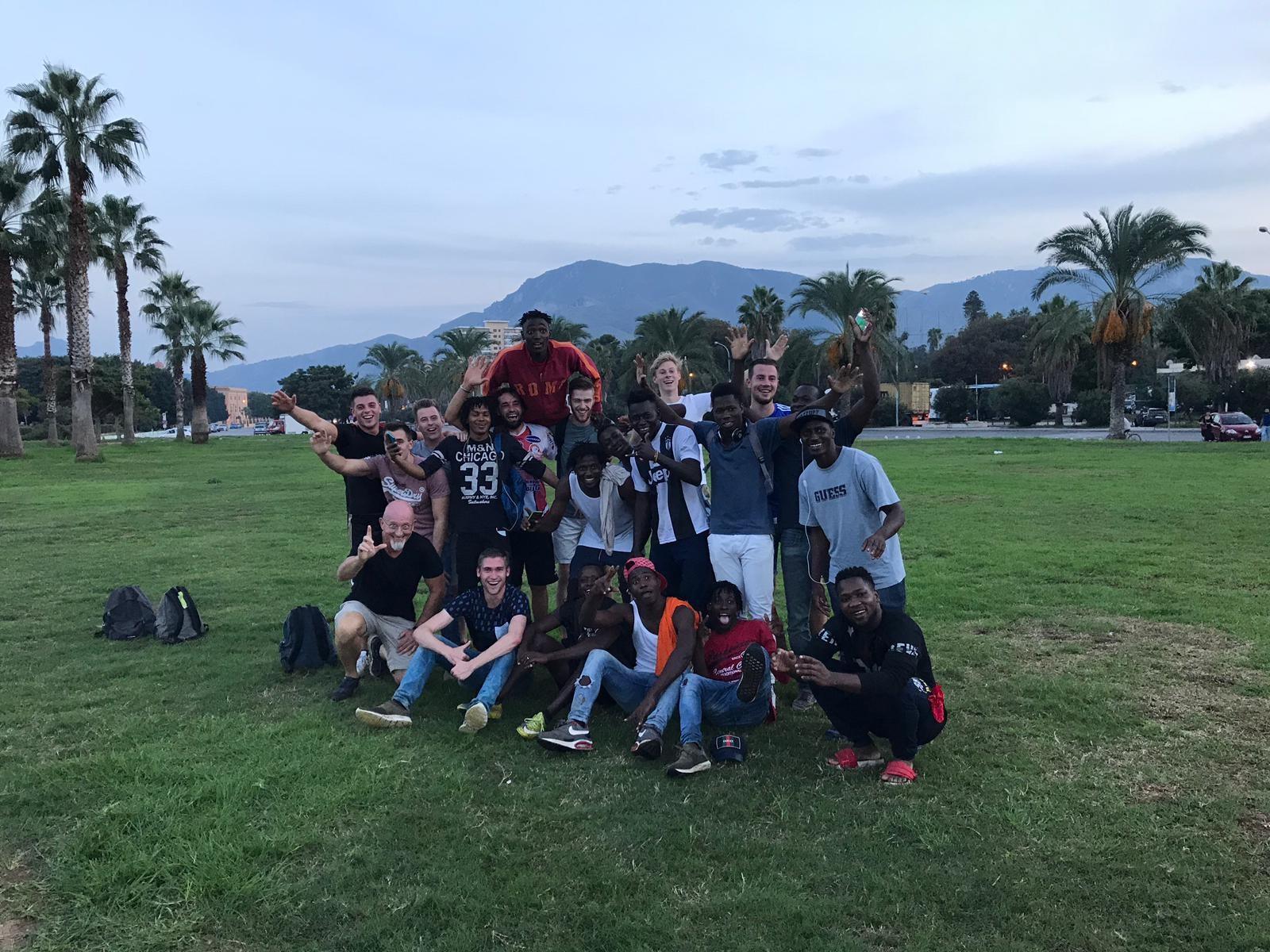
5
Migration track
In the second part of the minor, you are going to follow courses of the specific track that youchose whenyouregisteredforthisminor. Forthemigrationtrack,the followingcourses aregiven:
Understanding migration dynamics, governance andpolicy
Inthiscourseyouwilllookatpresentdaymigration dynamics.Thiswillbe donefromamultidisciplinary point of view, so political decision making and sociological/economical/geographical factors will be considered when we are looking at migration dynamics in this course. You, alone, will write a report about a migrant group and their path to migrationandintegratingintheirnewhomeland.
Trend analysis in resilience
During the current COVID-19 pandemic, a lot of things are uncertain and thingsthatusedtobenormalarenotnormalanymore.Itcanbesaidthatthe pandemic is a gamechanger, but maybe it is a good gamechanger. In this course, you will look a certain (mega)trends in modern day society and research what the pandemic has changed in our world and has maybe accelerated some (mega)trends that were already developing. As a group of 4 or 5 students, you will hand in several deliverables during this course, but themaindeliverableisaninfographicaboutanassigned(mega)trend.
Ethicsandmigration
In this course you will look at migration from a moral point of view. Countries and/or legislators have their own moral and ethical views on migration, this however means that migration will be handled differently depending on who is ruling the country at that time. You will look at several basic standpoints and ethical theories regarding migration and a specific topic regarding migration: ‘’Who is responsible?’’. You, alone, will write an article about a topic within the realm of ethics and migration.
6
Prevention,detectionandrespondingtoextremistthreats. In this course, you will learn about radicalization, extremism, terrorism and predictive profiling. You will learn the different ideals that come into play when we are talking aboutradicalization,extremismandterrorism.Nexttothat,you will learn about the principles and practical applications of predictive profiling. You, alone, will write a report about a topic intherealmofradicalization,extremismandterrorism.
Participativeresearchinarefugee/migrantcamp
The initial purpose of this course was to prepare you for the research trip to a refugee camp that would have taken place in the end of the minor. However, the situation surrounding Covid-19 is such that a trip is not possible, and even the alternative program is at risk because of the restrictions that are in place at the time of writing this article. Hopefully, when you join the minor, this course will happen as it supposed to and preparesyoutoaninterestingandeye-openingtrip!
Climate track
The climate track does not have courses, instead you will participate in a project regarding current environmental disasters that humans can have influence on. Using tools and gathered data (like a geographical analysis) to monitor certain project locations, environmental disasters can be mapped and conclusions can be drawn. Along with your multidisciplinary project team, you will present your results in a storymap.
Throughout the second part of the module, lectures of ‘’Professionals in disruptive events’’ are given to the students. Whichmeansthemigration track, aswellas the climate track. These lecturers are guest speakers that were involved in a disruptive event and share their experience with us. Once again, because of the COVID-19
situation it does not take place like the way it did the years before, but these lectures are nevertheless remarkably interesting! An overview of these lectures and two interviews with people that experienced a disruptive event account for the final report thatisrequiredtopassthisclass.
At the end of the minor, students present thier results in an exhibition. Here the students inform the audience of what they have learned the past semester and share their experiences. The organisation of this event is left to the students, under guidance of several teachers. Six groups have be made and they must work together to succeed inmakingthisexhibitionasuccess.
7
International aspects minor program
Disruptive events
The minor program Disruptive events is international. Therefore, the lectures and courses are thought in English and the deliverables are written in English. If the group is composed of only Dutch group members and the client is okay with theproduct written in Dutch, writing in Dutch is allowed. Since the minor is in English, students from around the world have joined this years minor program. The majority of the students are Dutch but eleven students are from different countries, including Italy, England, Spain, Germany, Poland, Cyprus, Germany, India and Norway. The opinion of the foreign students range from not great to great. The students who think the internationalism could be increased expected more international cases and an improved level of English of some of the teachers. The students who are satisfied with the internationalism like the diversity in cases and do not mind to use google translate or the Dutch group members to help translating sources from the internet. Most international students were satisfied with the communication with the client and conducting client work. Client work was conducted during both quarters and some of the clients were Dutch.
Most of the foreign students like to live in the Netherlands since it is a safe country, good human rights but the Covid-19 restrictions are a bummer. It is advised to look for a place on
time since it is difficult to find a student room. Many house owners do not want foreign tenants since they might have had bad experiences with them. As a tip, look for an internationalcourse at theUniversity youwant to apply for and ask them for help. There are many foreign students at the Environmental Science course from which some of the students live in the same house. Therefore, they might know places were foreigners are allowedtolive.
Most Dutch students chose this minor because of the topic. If the minor would have been in Dutch they would still have chosen to do this minor. As expected, the Dutch students were able to understand the teachers. To talk in English was, for some students a bit weird since it is not their native language nor a language whichtheyspeakmoreoften.But the English language is no reason not to join this minor program since the Dutch students managed to adapt to the English language within a few weeks. In addition, if no foreign students are in the project group, the main form of communication is in Dutch. This also includes tutor meetings and contact between studentandteachers.
8
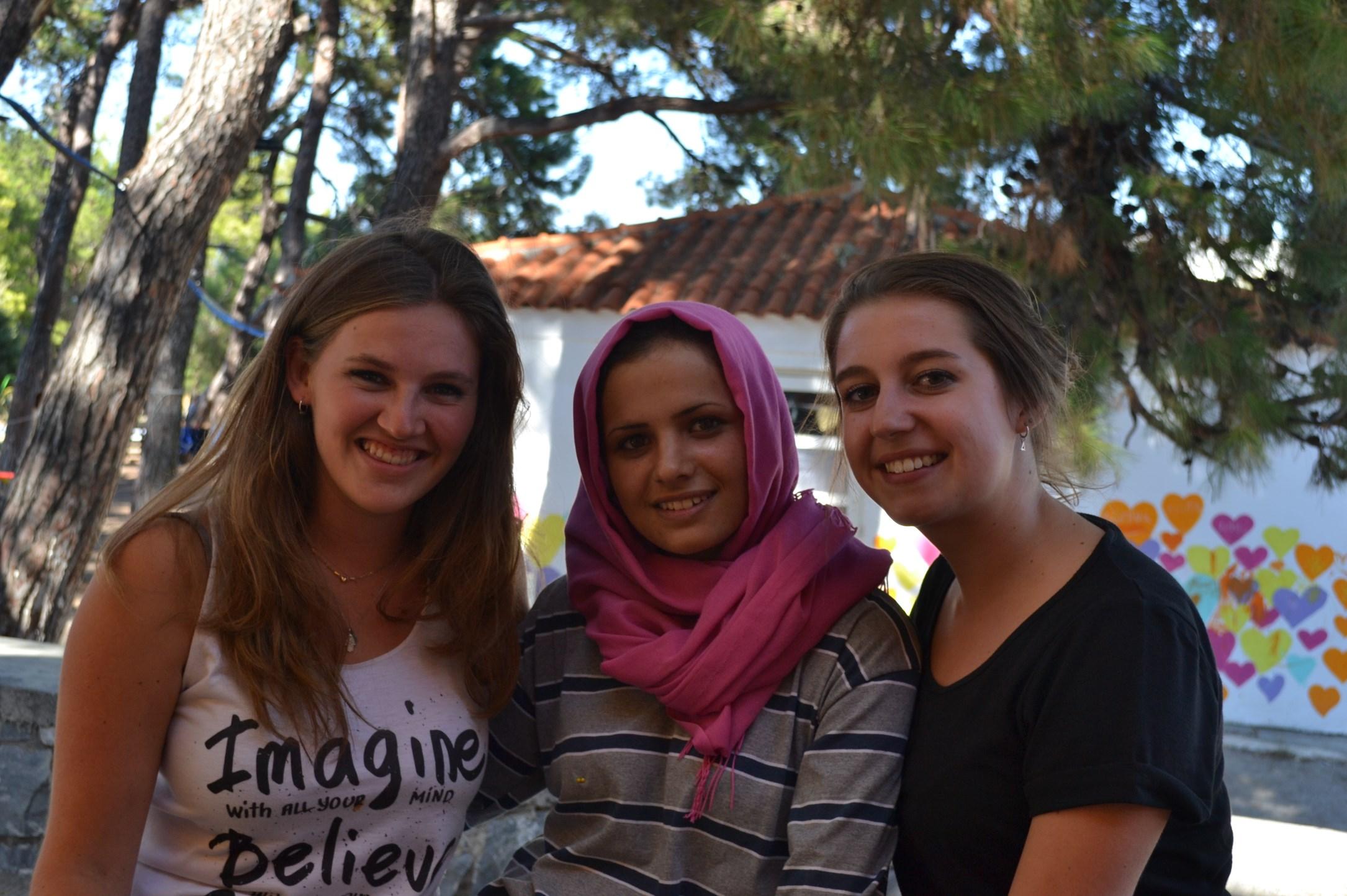
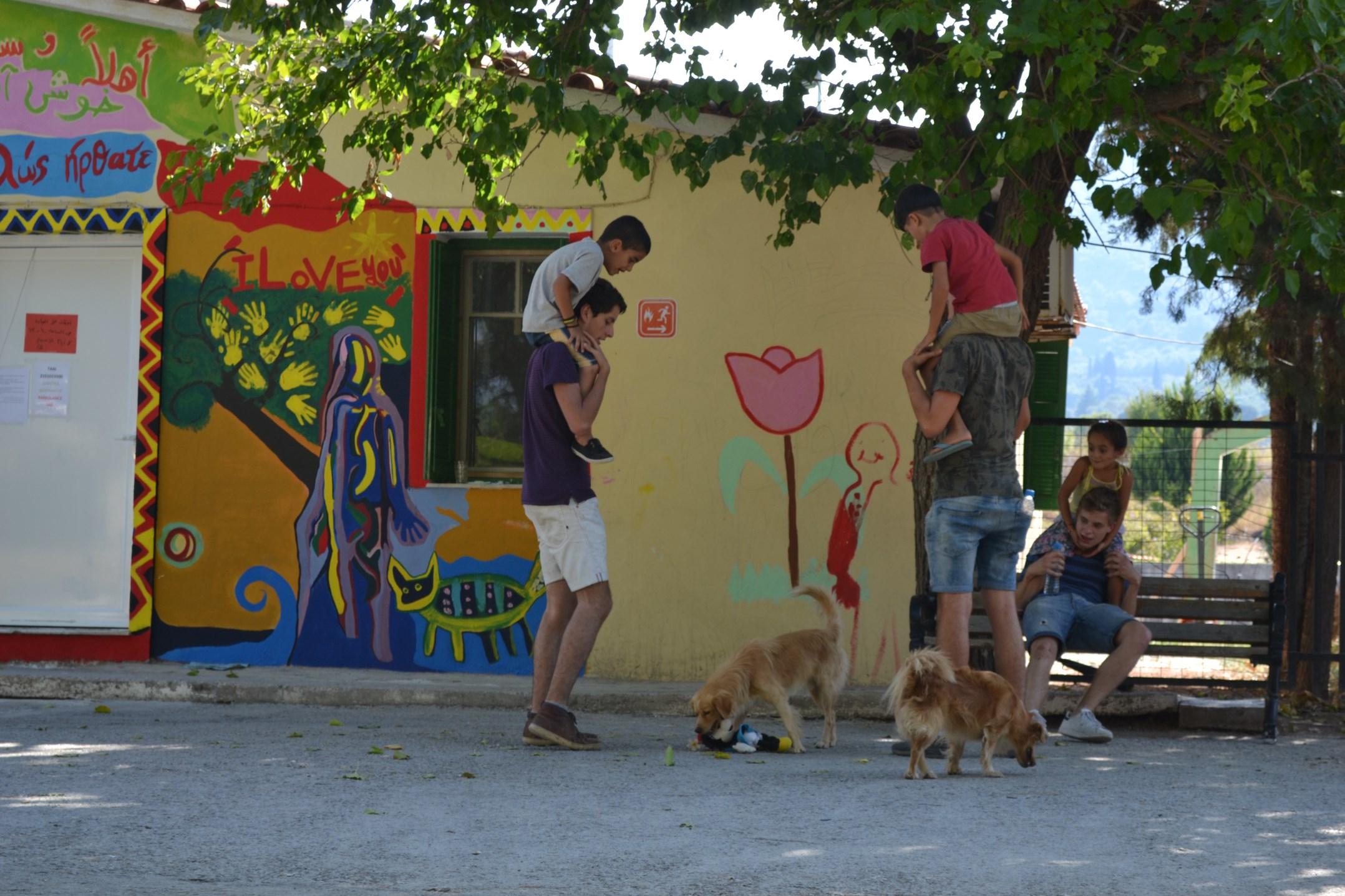
9
Content of the minor
In the minor Disruptive events, students made a lot of content for the different subjects. Most of the time groups were formed, which had to work on a project. The groups were very interesting, because most students have different study backgrounds and nationalities.
The first module
The first module was about disruptive events in general.Duringthismodule,therewereseveral projects done by the students. For the subject System Thinking In Disaster Resilience And Recovery, groups of students searched for solutions for different problems. As an example, one of the groups did a study for water supply on Lombok. Besides the projects that are mentioned in this article, the students also followed some other courses. One of thesecourseswascalledclimatechange.
WatersupplyonLombok
Due to pollution of the groundwater and the irregular raining moments, the habitants of the island Lombok do not always have the availability of clean drinking water. Last year, students did already provide a solution, the Warka Water Tower. However, this solution was not working that well. This year the students had to search for any useful changes to the design of this tower, or provide other solutions to provide drinking water. In the end, the students made a report and a video which showsthepossiblesolutions. Otherprojectsfor this subject were about privacy in emergency shelters, build back safer and resilience for climate change adaptions. Different organisations provide these projects. Some of the organisation are VLOK Foundation, CORDAIDandTUDelft.
10
For the subject Precasting Global Flood And Drought using ArcGIS, students dive into different cities in the Netherlands, which are located dangerouslywhenit comes towaterrelated problems. One of the cities was Rotterdam. The harbour of Rotterdam is surrounded by different smaller cities and important places. To precast the results of a
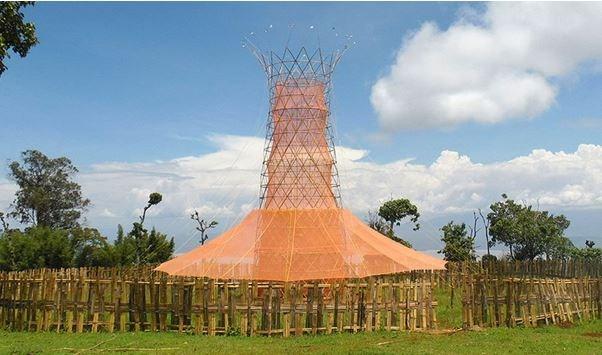
sea-level rise of 2 meters, ArcGIS was used. The students made a map which shows all theplacesthatwillbefloodedifthesea-level rises. The final product for this course was presented in a Storymap. The picture shows the areas (blue) which will be underwaterifthesealevelrises2meters.
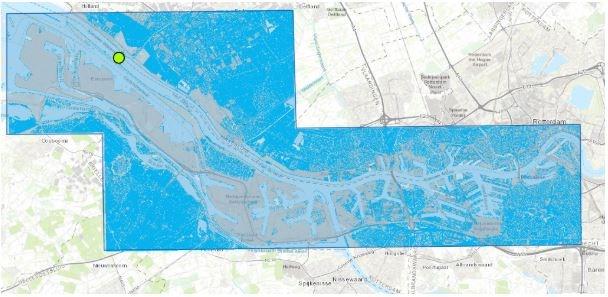
11
ProjectHarbourofRotterdam
Serious Game: Disaster in my backyard
At the end of the first module, the students were invited to take part in an experiment. This experiment took place at Breepark in Breda. During this experiment, the students had to work together in a team. The experiment was a simulation of a disaster. The groups had to react to this disaster and try to find the victimsinandaroundabuilding.
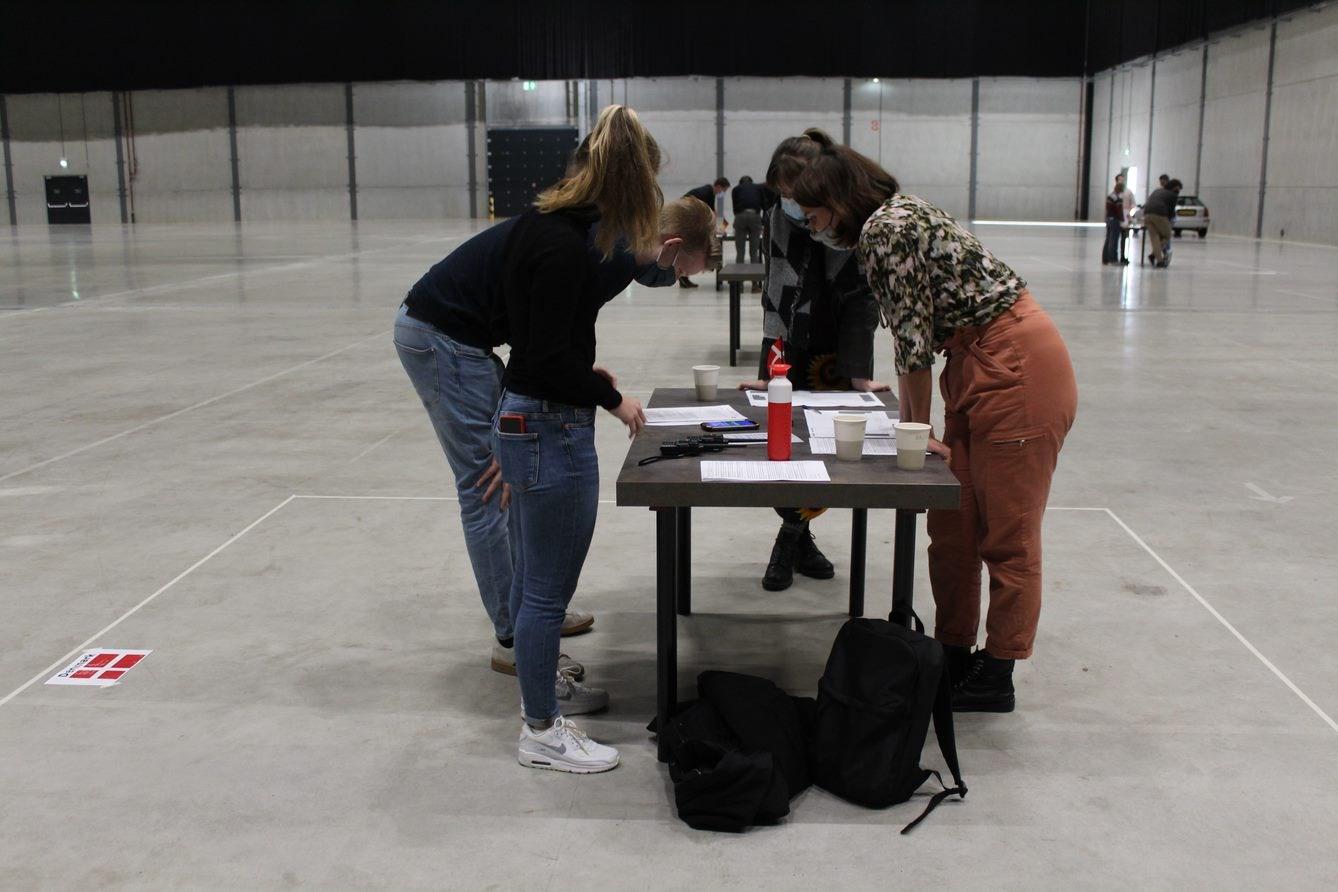
Due to the small amount of information during the briefing, the students had to gather information during the rescue actions. Because the access ofaid kits was limited,the groups had to communicate with each other in order to get all the aid kits at the right place. Every movement and action was monitoredandusedforfurtherinvestigation.
The second module
In the second module, the subjects stopped. The students have made a choice out of the two different tracks, being the Climate track and the Migration track. Both tracks had different subjects and projects. Climate students mostly focussed on the National ParkLoonseenDrunenseDuinen.
12
The climate track does not have any courses. Instead, there is one big project to work on. This project is in most cases located in the National Park Loonse en Drunense Duinen. There is one project about oak trees. These oak trees do not grow well there. To save them, students have to investigate the reason for this problem. Another project is about the influence of tourists on the national park. Mountain bikers, people who walk with their dog and other kinds of activities, have a certain impact on the dunes. The result in the future due to this tourism is investigated by the students. Another project of the climate track is about shifting dunes. The national park is famous for its large open areas which
contribute to the effect called shifting dunes. It is the largest area in Europe where this occurs. Due to a large amount of nitrogen in the ground, the vegetation is changing. Normally it takes100 yearsto have a forest out of a sandy area. Due to the amount of nitrogen, this process takes place here in 30 to 40 years. To prevent the sandy areas to become a forest, the vegetation has to be removed. Sheep and cranes are used to take measurements. To get an insight into the changes in the areas, students were asked to make a map of the national park which shows the areas of every habitat type. If this is done year after year, the volunteers in the area can get insight intotheresultsofthemeasurements.
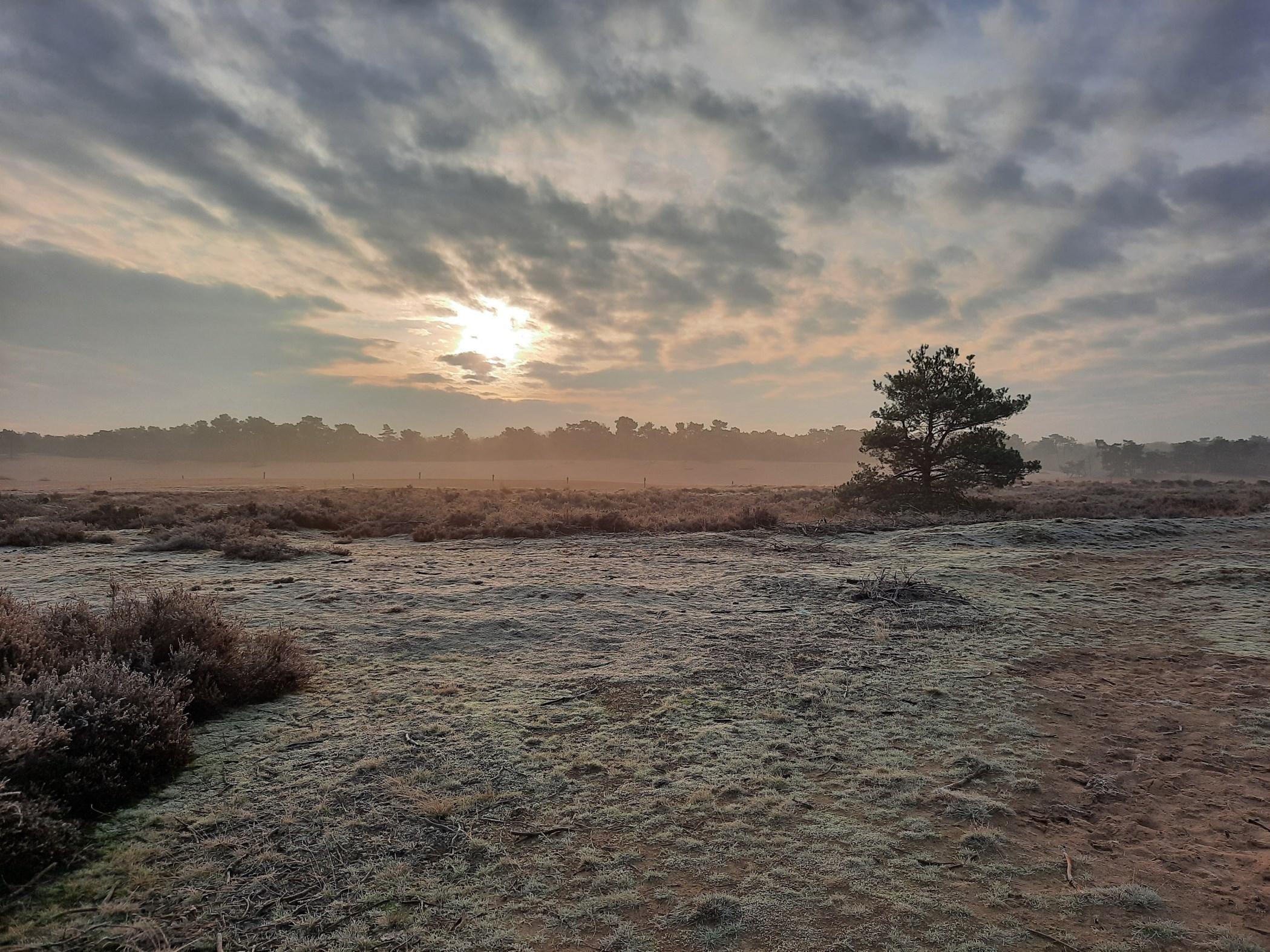
13
Climatetrack
Migrationtrack
The migration track has courses. Each course has its own deliverable. To giveinsightintothedeliverables,someofthemarementionedbelow.
Migration path
Thefirstdeliverableisaboutareport.The reportdescribesamigrantgroupandtheir pathtomigrationandintegratingintotheir newhomeland.Inthisreport,thecaseis approachedindifferentways.Thereisa sociological,economical,geographicalwayto takeintoaccount.
Infographic
For the course Trend Analysis In Resilience, an infographic is made about a trend. The Covid-19 virus did a lot to our society. In the infographic, students show a trend that is accelerating during this pandemic, for example, the advice to keep a distance from each other and wear a facemask. This trend could continue after the pandemic,inordertostaysafeinthefuture.
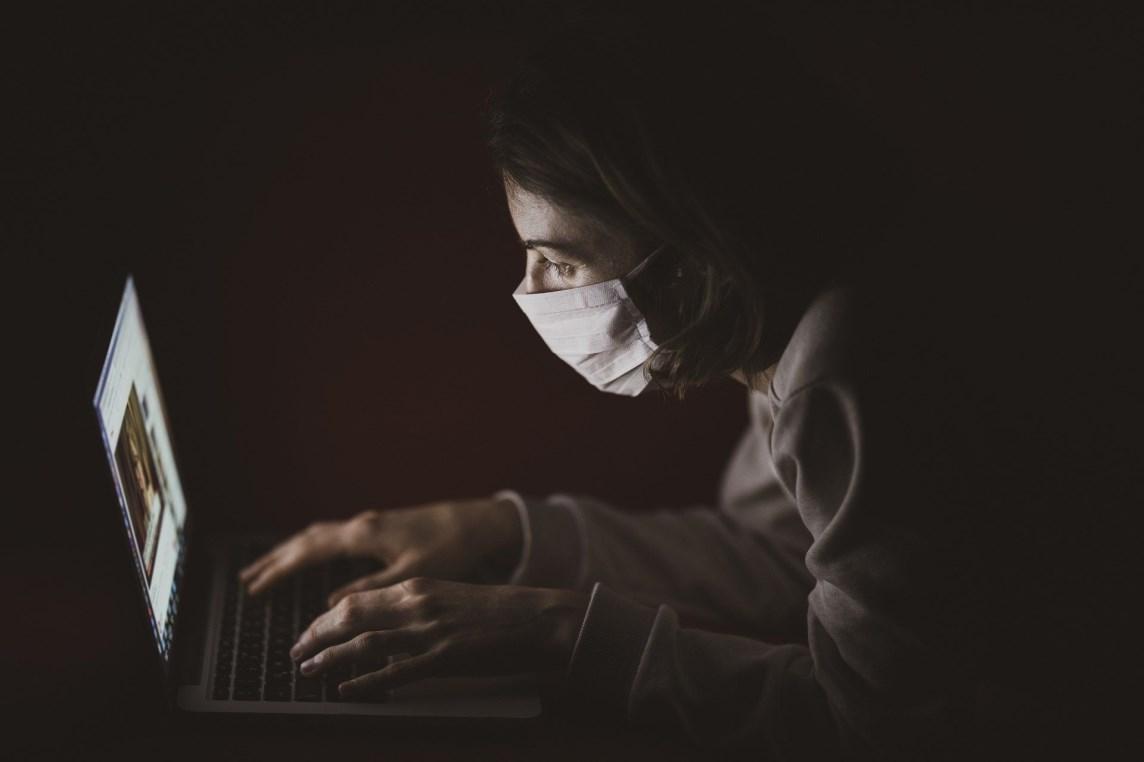
Refugee camp
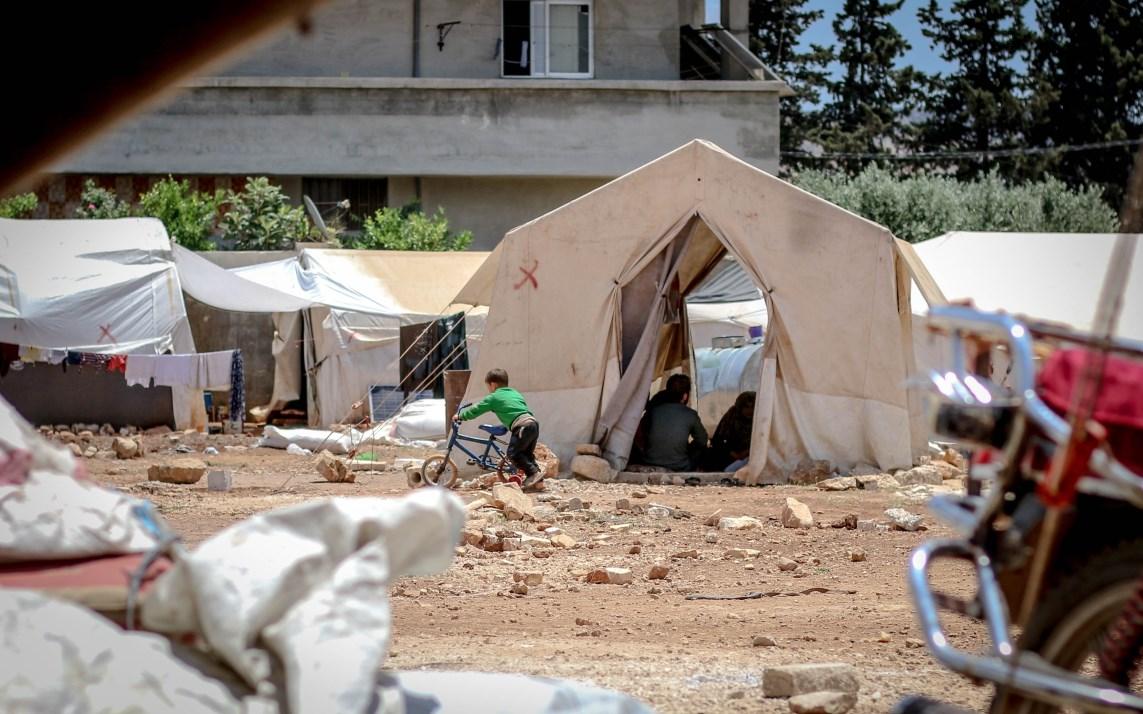
The initial purpose of this course was to prepare you for the research trip to a refugee camp. Due to the Covid-19 virus, this trip is cancelled. The purpose of this trip was to gain insight into life in a refugee camp and the stories of the migrants. Hopefully, this will takeplaceforyou,whenyoujointheminor.
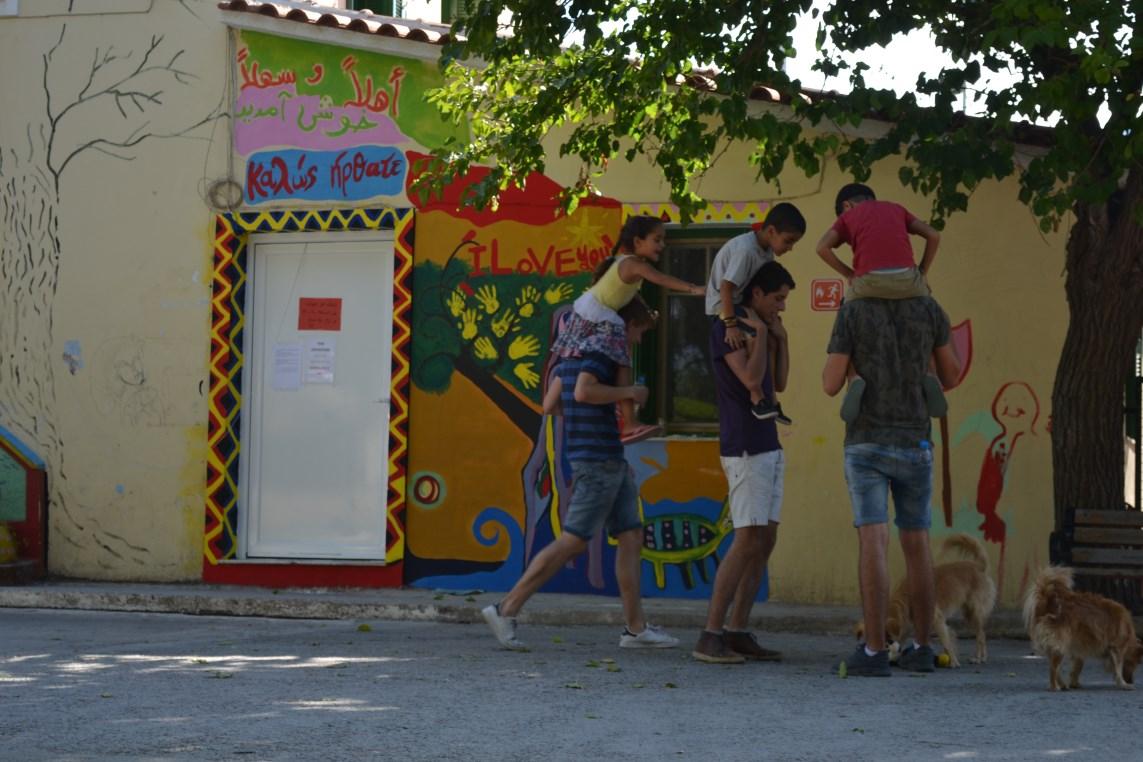
14
Building intensive care units
For the course system thinking; disaster resilience and recovery (DRR) group 17 had the chance to visit the building of the new intensive care units at the Jeroen Bosch Hospital in ‘s-Hertogenbosch. Every group was assigned to investigate new idea’s that can assist people in disaster situations. But before we get there,somethingaboutthecourseDRRfirst.
System thinking
The lectures were given by Eefje Hendriks, Pascal Bekkers and Lisa Lensink. The first lessons during this course were about system thinking. What is system thinking? While thinking about a system, if you do it right, you find out there are a lot of different individual parts interacting in a complex nonlinear way. A system consist always of 3 parts: a purpose, elements (parts) and interconnections. These interconnections between different elements resultinanoutcome,thatdoesnotnecessarily have to be the purpose. The purpose is thereforeatrickyone.Goalsorsub-goalsfrom elements can result in an outcome that nobody wants. At this point system thinking is brought to life. System thinking is about findingouthowdifferentelementsmustactor function with other elements in order to get an outcome that fits the purpose of the system. This means looking at the bigger
picture.
Learing about resilience
Besides our lectures on system thinking, we learned about resilience and how to be resilient. Being resilient is having the ability to survive a crisis and thrive in a world of uncertainty.To be resilienta communityhas to abletodosystemthinking.
System thinking is important for understanding complex crises and what they mean for the specific community. Besides system thinking, you have to make sure a community can adapt and transform.If a community is able to change their behaviour and actions fast, there are more changes to survive. And also sustainability is part of being resilient. The ideas that you use should not be used for only one scenario but should work in other communities as well, in future generationsandindifferentecosystems.
15
“They asked the student group to think about temporary emergency beds for hospitals during the Covid-19 situation”
The project
With thisknowledge andmore we startedour journey with real partners that have a business or job that has something to do with a disruptive event. Group 17 had chosen to start working on an assignment fromWijnroemer ReliefGoods(WRG).WRGis an organisation that offers a complete solutioninemergency andhumanitarianrelief goods across the globe. They asked the student group to think about temporary emergency beds for hospitals during the Covid-19 situation. WRG already started working on a wall partition system that could be used for temporary units that could host corona patients. But this wall system did not fulfil all the demands of the hospital. You cannot imagine how much rules and regulations are bound to a simple hospital bed. In fact, there are several types of classes thattelltheconstructorexactlyhowtobuilda room/bed. Group 17 has had the privilege to see the construction of new Intensive care
units at the Jeroen Bosch Hospital. This was only possible because the new beds/rooms werebuiltona locationwerethedoctorsand nurses did not need to be. This gave the opportunity to see everything in great detail without being of any disturbance to hospital staff or patients. The exclusive tour gave a whole new dimension into understanding the complexity of helping people in dire need. Especially if you start to understand that one person needs a room of30 m2 where every partoftheroom isfilled with something that cannot be missed. Only for the refreshment of the air was another floorneededjustasbigasthenewIC-floor.
With this information, we made a report on how to build temporary medical units in a disruptive situation. If there was more time, the model could have be elaborated much further. Maybe next year other students will pick up our work. It was nice to do something different, like this visit, in between alltheonlineclasses.
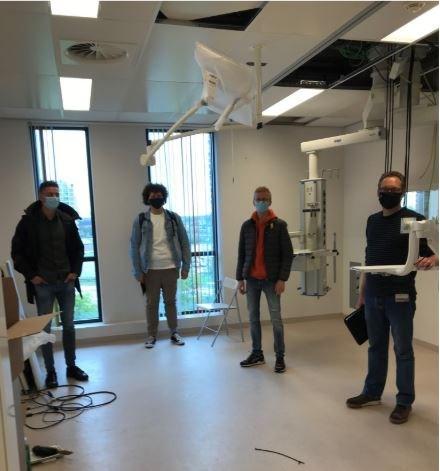
16
The minor during the Covid-19 pandemic outbreak
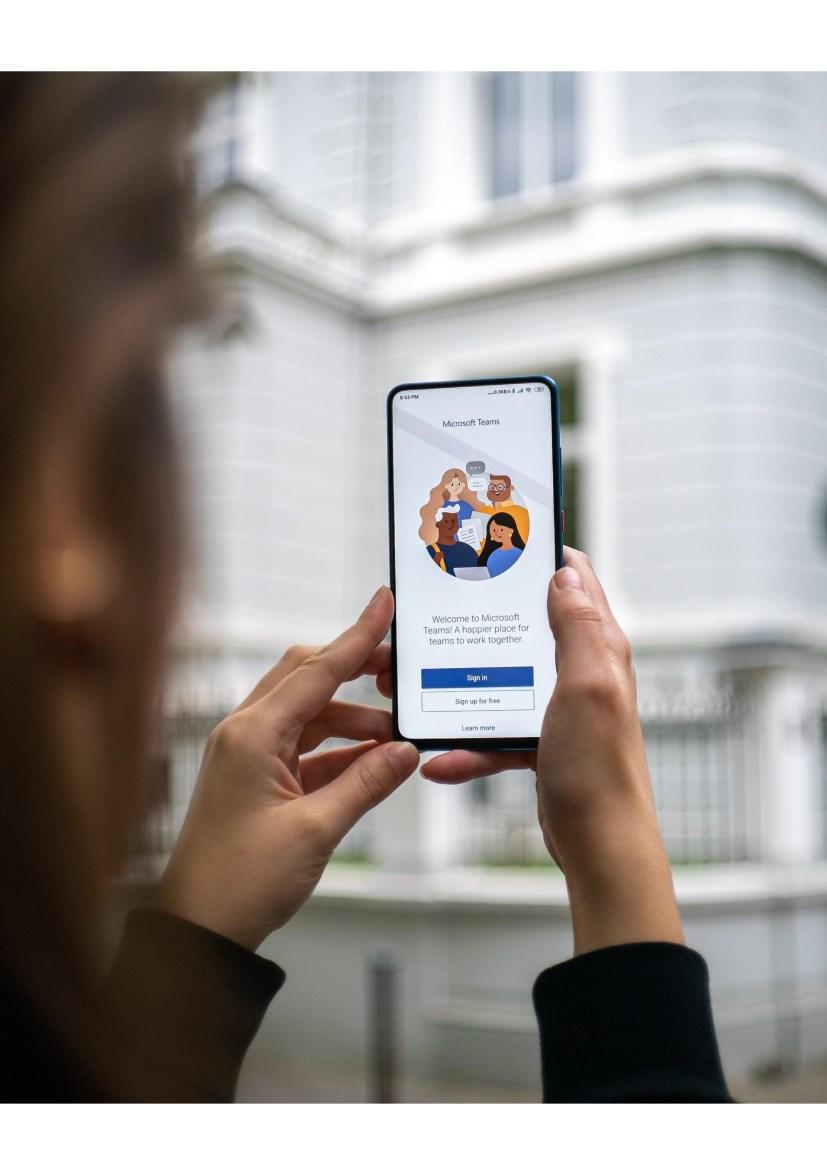
17
By Thijs van den Broek – student Civil Engineering
The minor Disruptive events could not have had a more subsequent year than this year.
Students already had to deal with study changes due to the new COVID-19 virus. Before summer we had to learn to workefficiently with programs like Teams and Zoom. Also tests and assignments had to be postponedorwere given in another form. Working together was not the same anymore.
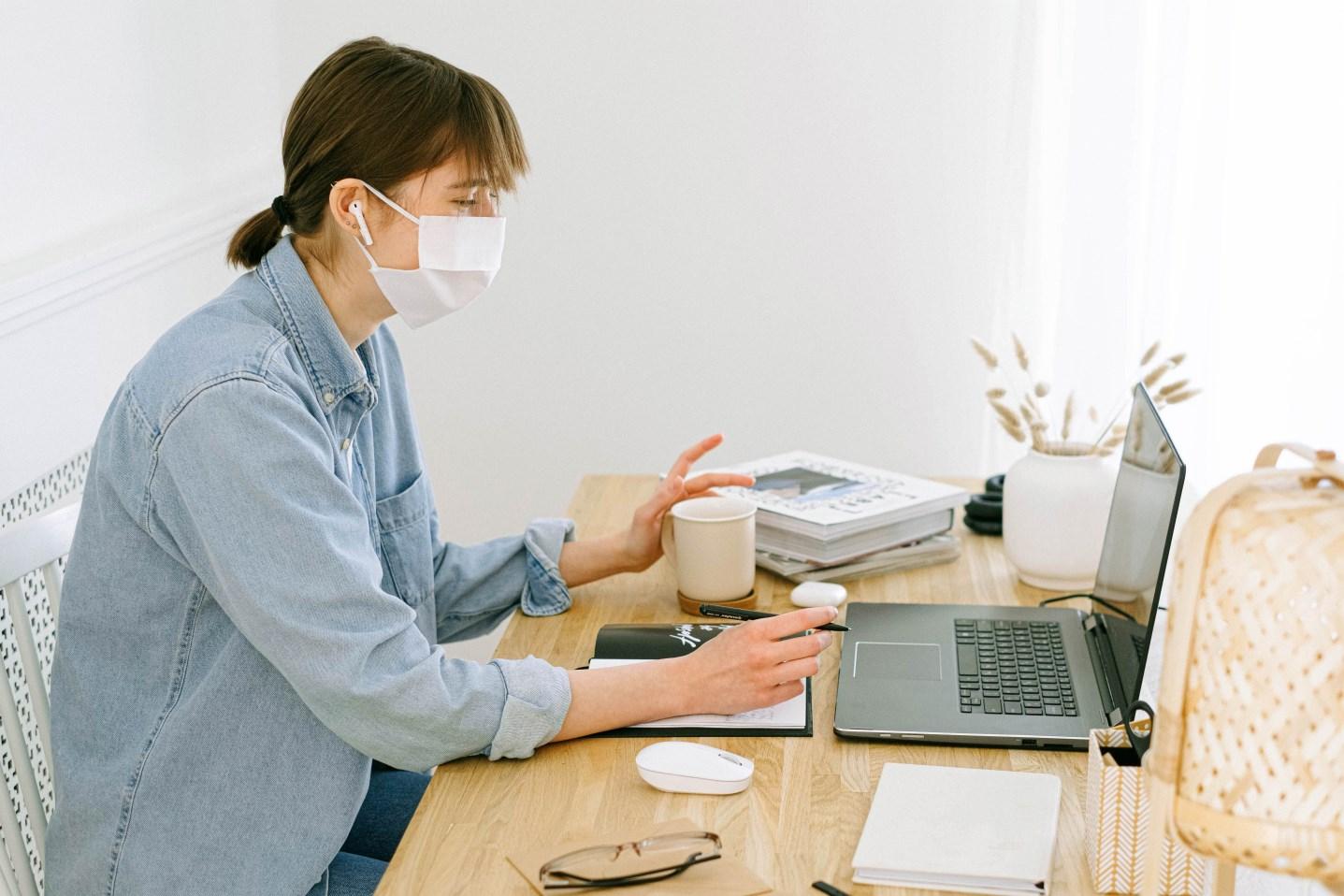
Although many of us hoped we could start fresh and hopeful on the minor, we were all disappointed. Meeting new friends and students was almost impossible and we were back behind the screens again, sadly. The most disappointing news was of course that the fieldtrips were cancelled. But
if you read the news during that time the coronavirus was not going away any time soon. I guess they were right. The COVID-19 virus survived almost any lockdown and slowly infection rates started to rise again! As students of disaster and resilience we could not have been pressed down with our noses onto the facts any better. For almost any course it was easier to relate to how the situation might be during a disaster. Of course, we still had the possibility to call teachers and fellow students at any moment in time, which is a luxury many do not have. But in our case, this was particularly important to be able to ask questions and to keep being involved.
We have had very few
times where we could be together, talking about our assignments and problems. It was only possible to go to school with your own project group (4-5 people) one day a week. At school you did not meet all the other groups, which was very disappointing but necessary. One day at school was a smart arrangement made by the organisation of theminor, ifI relate to myself; it was the most productive day of the week. Physical meetings are much more efficient! I do think that teachingduringatimelikethis is difficult. Itismuch harder to pass on enthusiasm and information from screen to screen than face to face. Anyway, precautions had to be made also for students of disaster!
18
Serious Game: Disaster in my backyard
One of the few offline events during the minor

19
The serious game is an experiment executed as a game in which the scenario of a natural disaster is sketched. The game was conducted in Breepark Breda. Different teams of 3/ 4 people were made and represented a rescue team. The goal of the game is to rescue as many victims as possible within the building. Each victim needs some form of medical attention and might need bandages, food, water, warm clothing etc. To prevent traumatic experiences for the people playing the game, the victims were QR codes with names. In addition, points can be obtained for each victim saved. Information about the event which took placeisprovidedafteravictimissaved.
Each team represented a rescue team from a country and were equipped with two walkie talkies for communication and a smart phone used to safe the victims. In the introduction of the game, each team had different code words to use to communicate with each other via the walkie talkie, despite the
walkie talkies were on different channels per team. Each country had a base set up around the communication centre which had limited resources of medical aid. At the start of the game, each team was assigned to save a few victims which included their necessity for medical aid and a description of where thevictimcanbe found.Themedicalaidisobtainedby the communication centre and is allowed to take this information with them and share it along the search and rescue teams. These medical aids were labelled with QR codes to make sure the product cannot be used unlimited. For example, one container with bandages contain 3 bandages. If victim “X” needed 2 bandages the container could have only 1 bandage remaining. If victim “Y” also needed two bandages, a second resource was needed to save victim “Y”. Whenthevictim was found,itwas savedby scanning the QR code. This code would tell which medical aid was needed. After scanning the correct medical aid, the victim was saved and could be
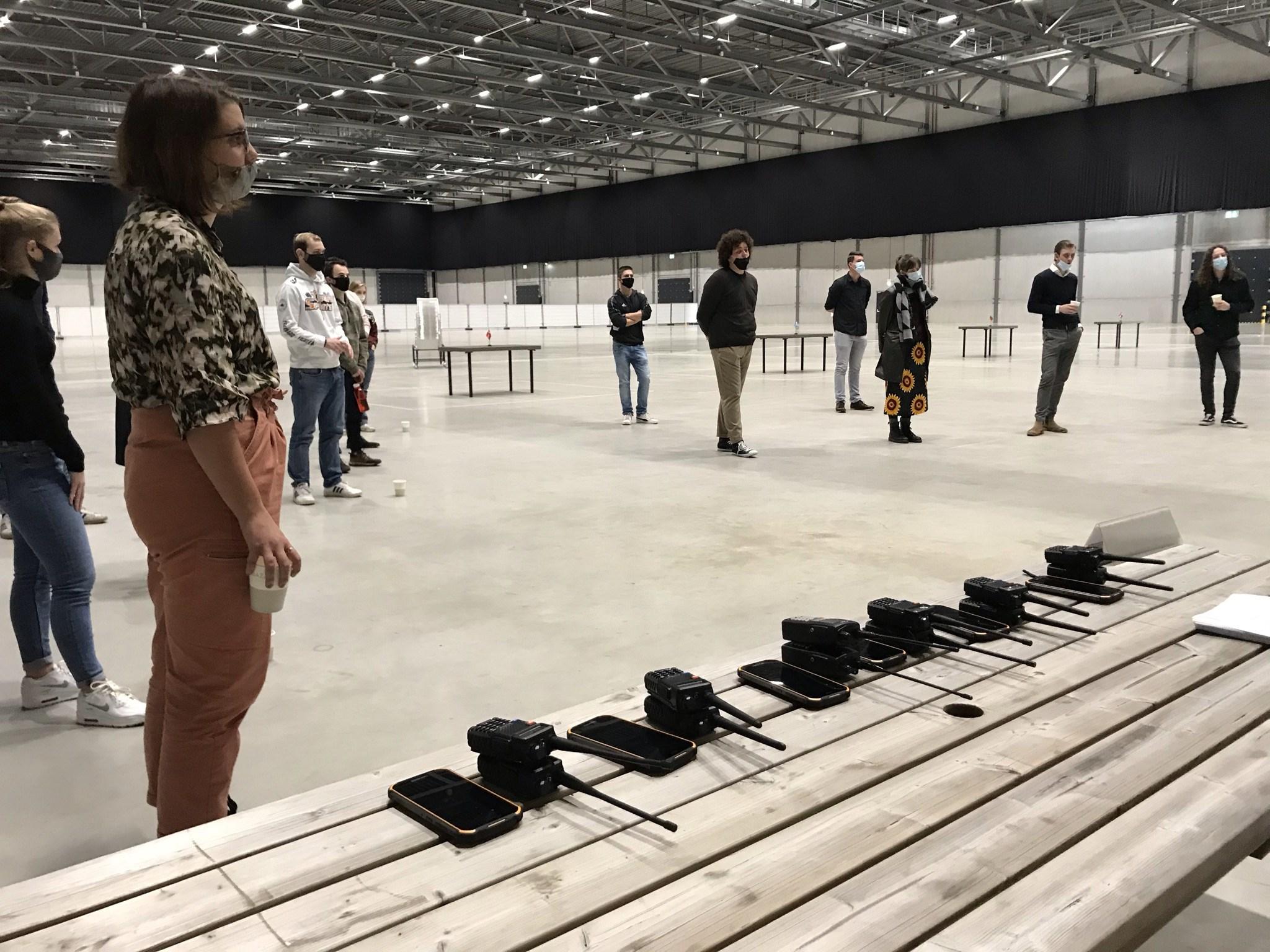
20
brought to the “field hospital” at the communication centre. The victims were at the site of Breepark. Therefore, they could have been outside or on one of the three floors. But no victims were in closed offices or rooms. At the end of the game, the organisers of the seriousgame,askedeachteamwhathappened.
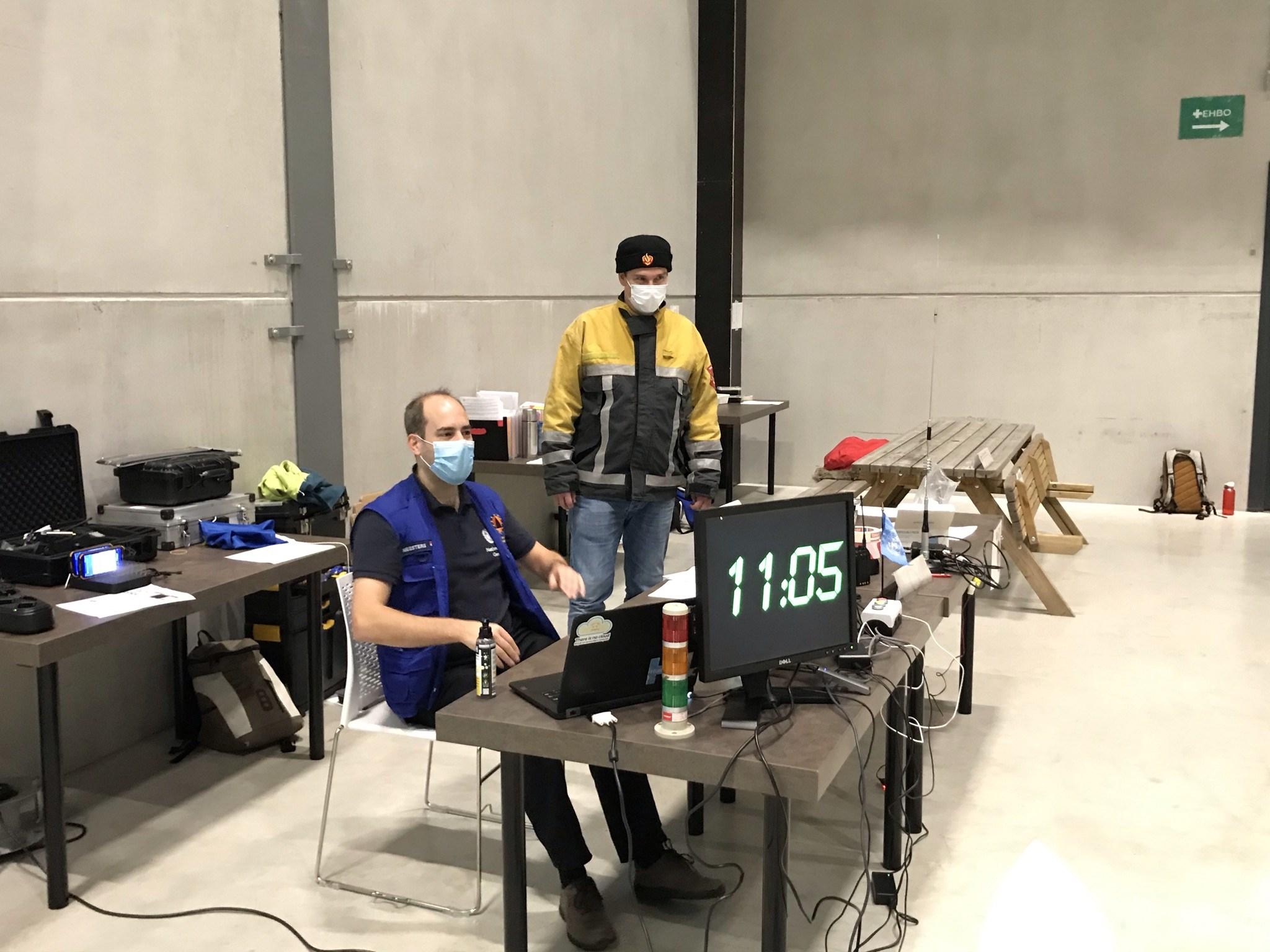
Spoiler
While the number of victims goes up, the availability of resources becomes scares. Therefore, each country shouldsharetheirresourcestorescuethemostamount of victims. The goal of the experiment was to determine which team could earn the most points. The teams can earn points if they save a victim. The distribution of points is irrelevant for rescuing people, but the experiment was used to find out ifthepoints distributionwouldcause teamsto work faster or maybe hide victims they are not assigned to rescue. During the game, medical resources were shared but sometimes a full containerwas traded foran empty water source. At the end of the game more collaboration took place to find the victims. Teams
started to ask each other if they already found person “X” and started to help each other. The people who remained at base were supposed to do the administration and make sure their rescue team had several people to rescue. Since the communication centre did not know which victim was saved, the administration teams should have made an overview to notify which victim was saved and where victims, which a specific team was not assigned to safe, were found. This overview should also contain which medical aid the found victims needed. This would have helped the other rescue teams to find more victims and improve the collaboration between the teams. In addition, the administration should have disposed the empty medical resources and make sure all the rescue teams were communicating within the same channel to help each other. Since the goal of rescue teams is to safe victims, instead of scoring points, collaborationwasofupmostimportance.
21
Effects of mental health in lockdown
The pandemic, caused by COVID19, has caused a lot of problems in the world since it began at the end of 2019. As of the 12th of January, a total of almost 91 million people contracted the virus, more than 1.9 million of them sadly passed away. But even though the pandemic took a toll on a lot of people, even more people are indirectly affected by the lockdowns almost all countries had or have to deal with.
Although the direct effects of COVID-19 can be devasting, experts predict that the long term effects of living during a pandemic/lockdown have just as many negative consequences. People gained weight because they ate
poorer and moved less. Next to that, the mental challenge that the pandemic boasts cannot be underestimated. People live more in fear than they did before the pandemic started, they are worried about getting the virus or are afraid that they lose their job because the economy is down. Research has shown that levels of depression and PTSS among a population (directly or indirectly affected) rises (and spreads through the population) evenly after disruptive events like riots, terrorist attacks, natural disastersandpandemics.
But therearethingsthatcould be done to counter this. By eating healthier and moving more, you give yourself the best chance that your body will stay healthy and in shape,
mentally and physically. Touching on the mental aspect, it is very important to get your information from trusted and legitimate sources, this way you ensure that you will not stress yourself out over something that is not true. Also, remember that everyone is on the same boat, everyone is having a tough time social distancing and being in a lockdown. So reach out to people,let them knowyoudid not forget about them and help them and yourself throughthis!
22
Real life disruptive experiences
arco Boulogne is a firefighter and part of an Urban Search and Rescue (USAR) team. He gave a guest lecture to the minor discriping what he and his team dows. The USAR team of Marco can be deployed within 4 hours intheNetherlandsand 24 hours abroad. The USAR is beingusedafterdisasterswere people need to be found under collapsed buildings, structures or any kind of obstacle.
The USAR in the Netherlands consists of 62 people divided in4 groupsof10,the resthave a more administrative function. A ‘’SAR’’ group consist of 1 commander, 6 rescue workers, a medic and two dog handlers. The teams traineverytwomonths.
MOnce a team is on a mission they are mostly under the jurisdiction of local authorities, the United Nation or any other organisation that might pull the strings during or afteradisruptiveevent.
Marco told us that the job is indeed extremely hard. One time the team is full of joy because they found a person alive, the other time people die in your arms. Searching people can be exceedingly difficult and it mostly takes a lot of time before finding someone. Every hour means less chance of survival. The job is physically and emotionally very tough. Besides trying to rescue others from the roubleitisalwaysimportantto watch the surroundings for anything that might fall or break and hurt someone from the team. Safety is notguaranteedatall.
The most important thing to me was that you always have to analyse the environment before you go and when you arrive. Before they leave, they are being checked by a doctor mentally and physically. This always helps someone to be more resilient. Not only mental but also physical preparation is important. One mayor tip Marco gave was bringing a local with the team. The local is worth his weight in gold, he toldus.
Marco also told us the maximum amount of time abroad is 14 days. And after theirmission there is time to reflect within the group and drink a beer. This is because they do not want anybody to go home stressed out.
23
Beirut Explosion
On the 4th of August 2020, in the city of Beirut Lebanon, a storage facility of Ammonium nitrate exploded dramatically causing loss of life, injuries and property damage. This happened at a time when the population is already facing civil unrest and large scale socio-economiccrisis,withthe COVID-19 pandemic on top of that. The blast itself killed at least 204 people with 6 500 people suffering injuries. The total property damage amounts to US$15 billion. This left around 300 000 people homeless.
The storage facility itself had 2750 tonnes of ammonium nitrate which was stored unsafely and without property safety precautions. These substances were stored under thoseconditionsfor6years.
This calls to question why it was stored there under those conditions as this explosion could have been avoided if proper safety procedures where followed. There were countrywide protests taking place against the government to protest its failure to prevent this disaster from happening again. The terrifying aspect of this disaster was that it was unforeseen. In a matter of minutes, it took the country into chaos. There was no preparation for this event, like that of a hurricane. To make matters worse it was in the port which is surrounded by buildings and people due to its location. All of the surrounding hospitals quickly became full and the red cross was pleading for donations of blood.
This brings up an important
topic to be discussed and which is the safe storage of chemicals and materials. This is preparation beforehand to prevent the disaster from happening again. It is vital for such substances to be stored correctly especially when the substances are either flammable or explosive. Great damage was done due to the location of the disaster. Considering the location being a port, where substances are transported on a daily basis, it is important that storage is done correctly. Organisations such as the European Agency for safety and health at work are vital for this. As they have guidance on the proper storage of chemicals in warehouses. It is precisely these guideless that are made to avoid situations such as Beirut.
24
...
Disaster articles: Lebanon and
But the problem is not with the guidelines but rather the lack of implementation of such guidelines. This is what makes this disaster even more tragic, it was avoidable. However, it is always the case that such events happen as wellaseventsthat seemmore uncontrollable or unforeseen such as earthquakes, hurricanes and tornadoes to name a few. In cases such as these, disaster relief must be available to provide aid in these situations. In Beirut, the Lebanese Red Cross mobilised
all available ambulances and sent them to the site to help patients. Furthermore, there has been aid provided by many organisations and countries such as WHO, UNESCO and France, offer aid and help to Lebanon to try and help where they can. However, the effects of this disasteraresolargethatitwill take Lebanon years until they willrecoverfromthisevent.
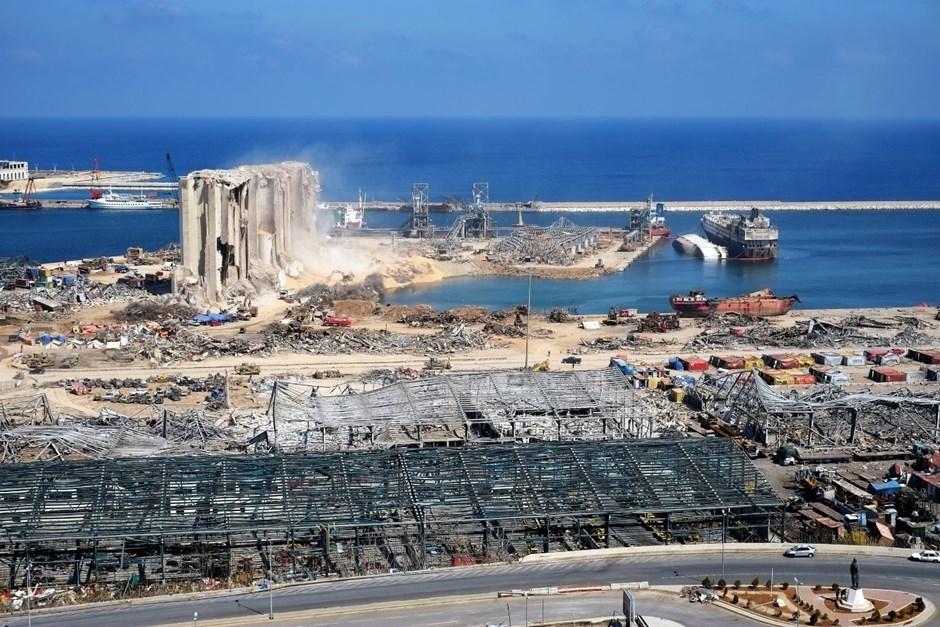
25
The damage after the explosion
A seaweed beach

26
Annually, the Caribbean is covered in sargassum. This is a natural process in which the algae blooms and reproduces. This event has taken place since 2011. Since 2015, the bloom is increased significantly and the seaweeds cover the Caribbean beaches of Mexico, the Dominican Republic and Barbados. The sea, in between these three places, will be covered by sargassum. Sargassum floats due to berry-like sacs filled with air. Due to ocean currents and wind, the bloom is abletodriveallthewaytowestAfrica.
The algal bloom is expected to be caused by the increase of the water temperature and the use of nutrients in agricultural areas. These nutrients runoff into a river and end up in the ocean. The increased water temperature and addition of nutrients in combination with the sunlight, which is a constant, make sure the sargassum is able to growfaster.
The bloom will provide an ideal spawning place for fish since the eggs will be close to the warm surface layer and the eggs are protected from predators. The problem with algal blooms is that it is closely related to the eutrophication process and it creates a mat which blocks the sunlight for all phototrophic organisms living below the surface of the water. In addition, the seaweed ends up on the beaches which, for example, prevents baby turtles from entering the sea since they have to climb over the seaweed before entering the water. The baby sea turtles mightalsogetcaughtinsidetheseaweed.
During the eutrophication process, the sargassum will have to fight for resources, such as sunlight and nutrients. The singular seaweed with the smallest buoyancy will go to the bottom of the mat. Therefore, they will have nutrients available but no sunlight. This will cause the individual sargassum to die.This specie isfirstly degradedby herbivores within the ecosystem. During the decomposition process, oxygen is consumed and carbon dioxide is produced. Due to the size of the bloom, the oxygen concentration lowers until the herbivores (aerobic organisms which need oxygen) cannot survive. They either leave the ecosystemordie.
At this point, a dead zone is created at which anaerobic bacteria (organisms who live in an environment without oxygen) take over and start to decompose the dead organic matter. During this process, hydrogen sulphate is produced which smells like rotten eggs. To clean the beaches, heavy machinery is used to remove the seaweed. The collected seaweed is later piled up since there is no sargassum cleaning program. Due to the lack of airflow through the pile of seaweed, the seaweed will degrade anaerobically and the smell of rotten eggsareproduced.
Studies found that sargassum contains natural oil which could be used for the production of biofuels, or in an ideal world, the oil could be stored to preventthe increase inatmosphericcarbon.Afteroil extraction, the residue can be used as cattle feed or it can be composted. The economy of the regions whichsufferfrom thealgalbloom ismainly basedon tourism. Therefore, the organic matter is not properly processed. By investing in harvesting and processing the sargassum, the ecological and touristicdisastermight be preventedorreducedand a new source of income is produced in countries or regionswhicharemainlyfocussedontourism.
Tourists and locals enjoying a day at the beach. Seaweed turns the seawater black at some spots.
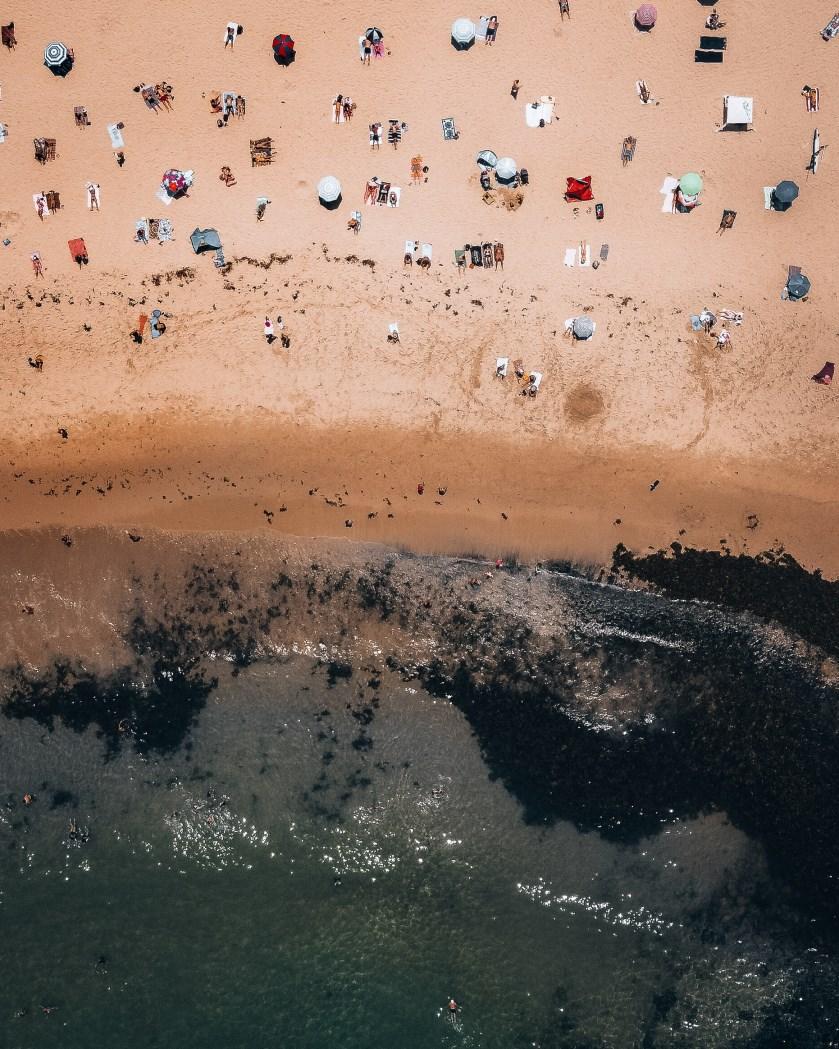
27
Current and predicted disasters with regards to water
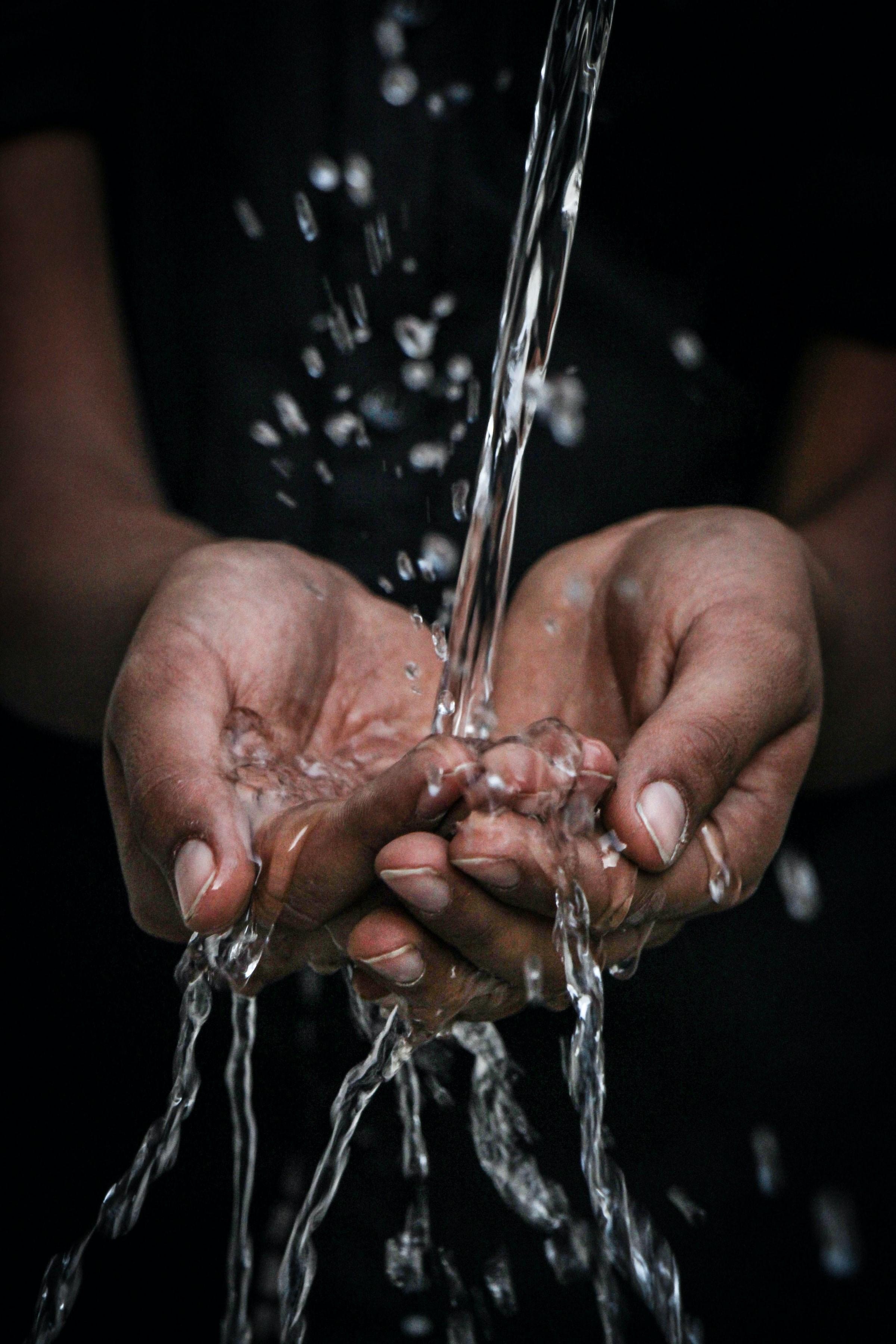
28
Water is one of life’s first necessities. Therefore, a lack of water will stop all biological processes which are indirectly used to balance the biological ecosystems and human activities which include water usage. The availability of water is decreasing which, according to the World Health Organisation, has already affected 2.1 billion people around the world.TheWorld HealthOrganisation expects in 2050 this number to increase to 50% of the world’spopulation.
Despite70%oftheEarthssurfaceiscoveredwith water, only 3% of this is fresh water. From this 3%, 66% is trapped in glaciers and snowfields and not available for water consumption. The remaining 1% of all the water on our planet is available for consumption. In addition, not all the available fresh water is suited for human consumption or for organisms to live in due to pollution,makingfreshwatermorescares.

Water shortage is caused by the increase in freshwater use and the depletion of freshwater resources. This is mainly caused by the process of climate change in which the annual rainfall decreases (deforestation of rainforest which used to create clouds) despite the frequency of heavy showers increase (due to heavy showers, the rainwater does not have enough time to sink through the soil and enter the ground water.) On the other hand, water scarcity, resulted from using an inadequate natural water source to supply a region’s water demand (physical water scarcity), or it results from poor water management in which water is spilled (economic scarcity.)
Economicwaterscarcityisoftencausedby agriculture.75%oftheavailablefreshwateris usedforfoodproduction.Therefore,water availabilitywillbecomeabiggerproblemin thefutureduetoanincreaseintheworld population.
There are successful measures now which can be held to reduce water usage. Ranging from simple improvements on your house appliances, drastic measures and changes in diet. The simplest measures include closing thetabifyoudonotneedwater,forexample, whilebrushingyourteeth
Other options are to shower instead of bathing, storing your own rainwater for garden use, water your plants at night, drip irrigate plants instead spraying, use compost since it can hold water, fill the laundry machine to lower the frequency washing cycle frequency,coverthe swimming pool when it is notusedtopreventevaporation.
Thedrasticmeasure “Ifitisyellow,letit mellow.Ifitisbrown,flushitdown!” wasonce advisedintheUnitedStateswhentherewasa watershortage.Meaningthatifyouurinated inthetoilet,youshouldnotflushit.Youonly flushwhenyouhavehadapoo.Changingyour dietwillreducethewaterconsumptionfor mostpeople.Thischangeincludesthechange indiet.Forexample,anaveragebeef-based hamburgeruses3000Lofwater.Therefore, onebeef-basedhamburgerisequaltothe averagewateruseofthewaterconsumption ofonepersonshoweringfortwomonths.
29
Sponsh’s solutions

Sponsh is an Eindhoven University of Technology spin-off that tries to condense watervapor inthe air to make fresh water. Many organisms in dry areas use humid air as their source of water. For example, the Namibian desert beetle has hydrophilic and hydrophobic areas on its skin which are used to collect water and the web of desert spiders are also used to absorb water. Sponsh has used biomimicry to remove condensethewatervaporintheatmosphere. Their temperature-sensitive smart textile becomes hydrophilic when temperatures are low. Therefore, the textile will absorb water vapour at night which causes the fibre to swell up to 4 times theiroriginal volume. Due to the cold temperature, the water vapour will condense and become liquid. When the temperature increases, the textile becomes hydrophilic causing the fibres to contract. Therefore, the absorbed water is pushed out of the textile and liquid fresh water is produced. Unfortunately, Sponsh is still in the developing phase. In the laboratory, 1.3L of water was produced using 1.3m2 of coated textile.
Several appliances are promoted on their website despite the company is still in the product development phase. The textile could be wrapped around a series of tree trunks. Therefore, the produced water will fall down near the tree to prevent irrigation of other plants.TreeSponshis appliedfortreesaplings which should protect them from being eaten by bigger herbivores and provide water. A third example is the home Sponsh which will cover the roof and or walls with the smart textiletoprovidedrinkingwater.
When applied, the appliances of the smart textile will cause a reduction of water scarcity improving the crop yield. By combining this with an improved water management and individual water saving measures a lot of water can be saved and might be used to conquerdesertification.
30
The United Nations Office for Disaster Risk Reduction
The UNDRR (formerly known as UNISDR) is an excellent example of how disaster management is applied and operated. The UNDRR operates on a global scale to prevent, reduce and limit the impact of natural disasters.
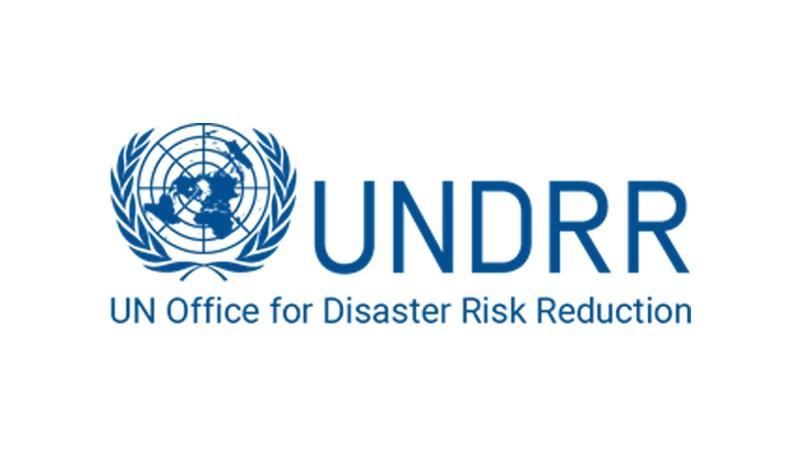
FoundationandtaskforceofUNDRR
The UNDRR is a secretariat office of the United Nations and was created in 1999 as International Strategy for Disaster Reduction (ISDR). Back then, the mandate revolved around the assembly of an international framework for response of the international community to the increasing incidence and scaleofnaturaldisasters.Nowadays,themain task force of the UNDRR is to support the implementation and revising of the Sendai FrameworkforDisasterRiskReduction.
The Sendai Framework was adopted by the UN in 2015, during the world conference on disasterriskreductioninJapan.
This framework has settled four priorities for action;
• Understandingdisasterrisk;
• Strengthening disaster risk governance to managedisasterrisk;
• Investing in disaster risk reduction for resilience;
• Enhancing disaster preparedness for effectiverespond,recovery,rehabilitationand reconstruction.
Besides these priorities, the Sendai Framework has also set seven global targets for 2020 and 2030. The UNDRR oversees that these targets are met, on a global, regional and national level. Operating on different levelsallows forthe identificationofsynergies to improve coordination within and between countries. This method assists in creating an increase in countries with a national and local disaster risk reduction strategy, which is one oftheseventargetsoftheSendaiFramework.
31
ImpactofUNDRRondisasterriskreduction
The UNDRR has established a tremendous increase in investments regarding resilience to disaster risks. One of the main strategies constructed, to oversee the priority #3 of the Sendai Framework, is called ‘Building Back Better (BBB)’. This strategy is aimed at the recovery phase after a natural disaster, in which infrastructure and private properties are designed to withstand the devastating forces of natural disasters. This was implemented during the recovery of Java, after it was struck by an earthquake in March 2006. Based on the reconstruction of the Earthquake, strengthened houses were designed and over 100,000 of these dwellings werebuiltwithin2years.

WhatwecanlearnfromtheUNDRR
Natural disasters will increase in scale and frequency, with rising temperatures globally. What the UNDRR emphasizes is the importance of global collaboration to tackle not only disaster risk reduction, but also climate change. To remain ahead in sustainable development, managing the risks related to natural disasters is key when it comes to long-term benefits. With the BBB strategy, the scale of damage will decrease over the years as more and more nations become disaster resilient. This significantly decreases the need for recovery construction, thereby sparing resources and their connectedclimateimpacts.
32



























